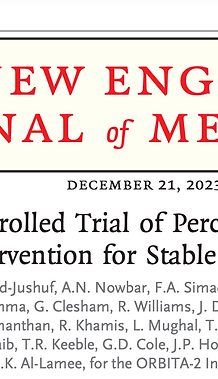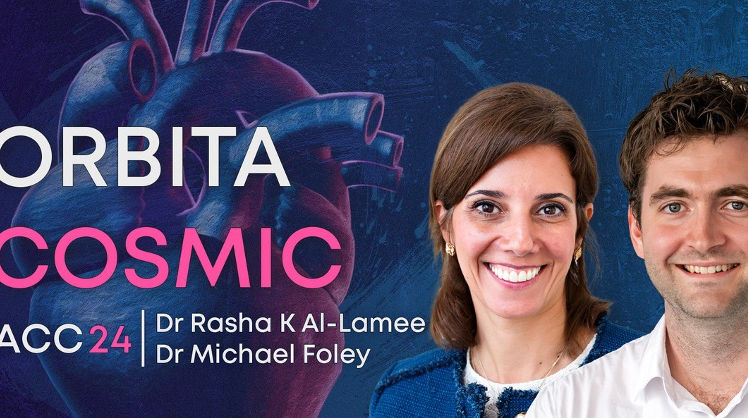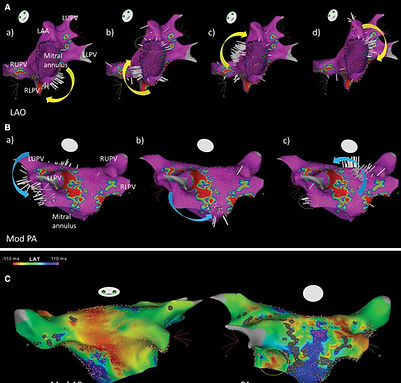Projects Funded
We have provided support for a number of key original research works, which have contributed significantly to our understanding of cardiovascular health. Here are some examples of this work:

ORBITA-COSMIC
Foley et al., 2024

ORBITA-2
Rajkumar et al., 2023

Ripple Mapping
Luther et al., 2016

Instantaneous Wave-Free Ratio
Nijjer et al., 2014
ORBITA-COSMIC
Foley et al., 2024
ORBITA-COSMIC tested the efficacy of coronary sinus reducer (CSR) in improving myocardial perfusion and reducing angina in patients with stable coronary artery disease. While CSR did not improve myocardial perfusion compared to placebo, it significantly reduced daily angina episodes, supporting its use as an antianginal therapy. [https://pubmed.ncbi.nlm.nih.gov/38604209/]

ORBITA-2
Rajkumat et al., 2023
ORBITA-2 was a placebo-controlled trial assessing PCI's effectiveness in relieving angina in patients not on antianginal medication. It found that PCI significantly reduced angina symptom scores compared to a placebo procedure (2.9 vs. 5.6). This suggests PCI offers symptomatic relief for stable angina with minimal medication. [https://pubmed.ncbi.nlm.nih.gov/38015442/]


Instantaneous Wave-Free Ratio
Nijjer et al., 2014
This study explored the use of continuous instantaneous wave-free ratio (iFR) mapping with motorized pullback to evaluate the severity of blockages in coronary arteries. iFR measures pressure during a specific part of the heart’s cycle to assess how much a blockage restricts blood flow. In 32 arteries, this technique accurately predicted the outcomes of stent placement by identifying the length and severity of blockages. Targeting the most severe areas led to significant improvements, offering a more precise approach to treating heart artery disease and guiding stenting decisions during procedures. [https://pubmed.ncbi.nlm.nih.gov/25459526/]
Ripple Mapping
Luther et al., 2016
This study explored Ripple Mapping (RM) to treat irregular heart rhythms after ablation. RM helps visualize weak heart signals, making it easier to pinpoint areas needing treatment. In 20 patients, RM-guided procedures successfully stopped abnormal heart rhythms in 19 cases, offering a more precise approach to treating complex heart conditions. [https://pubmed.ncbi.nlm.nih.gov/26757985/]
